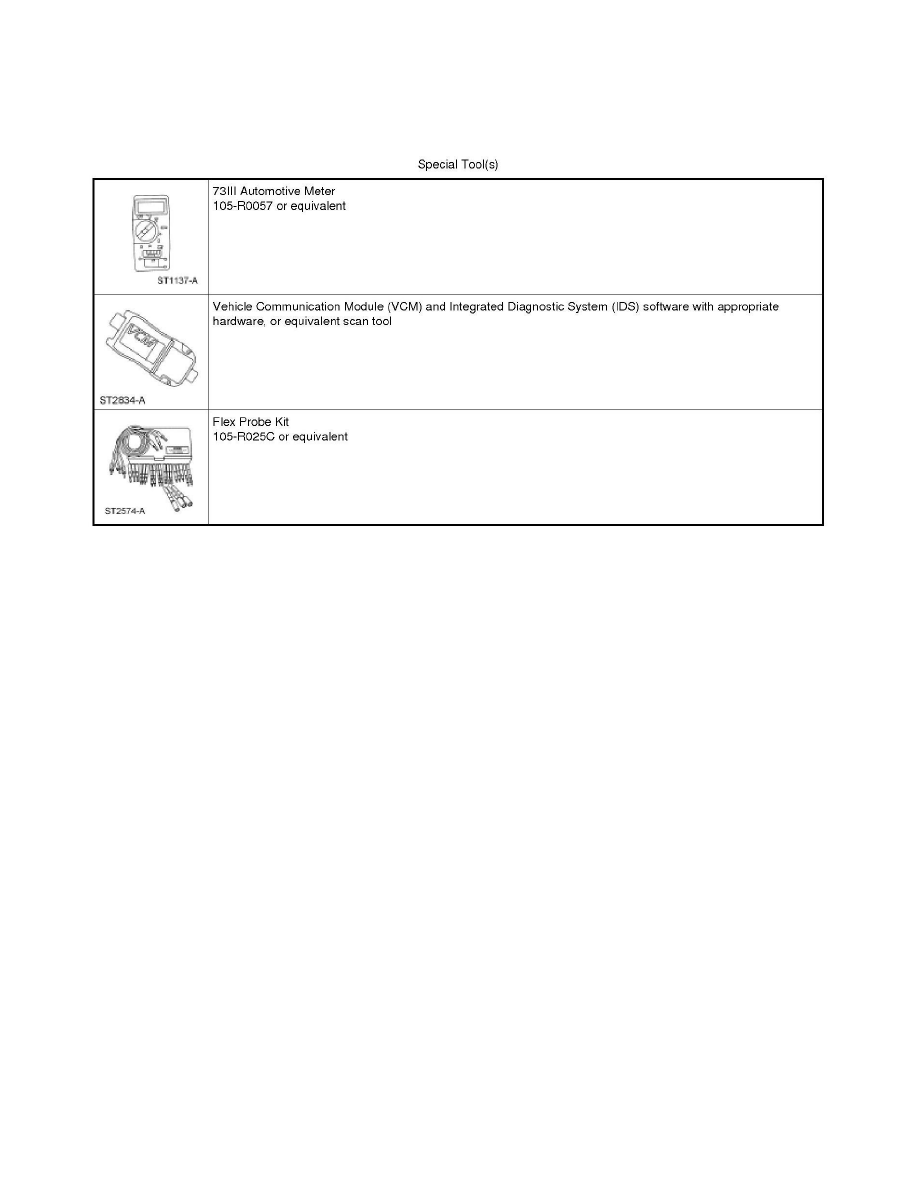Focus L4-2.0L (2009)

Information Bus: Initial Inspection and Diagnostic Overview
Special Tools Used With Diagnostics
Communications Network
Principles of Operation
Communications Network
Principles of Operation
NOTE: The Smart Junction Box (SJB) is also known as the Generic Electronic Module (GEM).
Vehicle communication utilizes both Medium Speed (MS) and High Speed (HS) Controller Area Network (CAN) communications. CAN is a method for
transferring data among distributed electronic modules via a serial data bus.
The vehicle is equipped with 2 module communication networks:
-
High Speed Controller Area Network (HS-CAN)
-
Medium Speed Controller Area Network (MS-CAN)
High Speed Controller Area Network (HS-CAN) and Medium Speed Controller Area Network (MS-CAN)
CAN is a communication network that uses an unshielded twisted pair cable of data (+) and data (-) circuits. The data (+) and the data (-) circuits are
each regulated to approximately 2.5 volts during neutral or rested network traffic. As bus messages are sent on the data (+) circuit, voltage is increased
by approximately 1.0 volt. Inversely, the data (-) circuit is reduced by approximately 1.0 volt when a bus message is sent. Multiple bus messages can be
sent over the network CAN circuits allowing multiple modules to communicate with each other.
The MS-CAN operates at a maximum data transfer speed of 125 Kbps for bus messages and is designed for general information transfer. The HS-CAN
operates at a maximum data transfer speed of 500 Kbps and is designed for real time information transfer and control.
Certain network faults may cause inconsistent message communication. The CAN may remain operational with only 1 of the 2 termination resistors
present.
The following fault chart describes the specific CAN failures and their resulting symptom:
